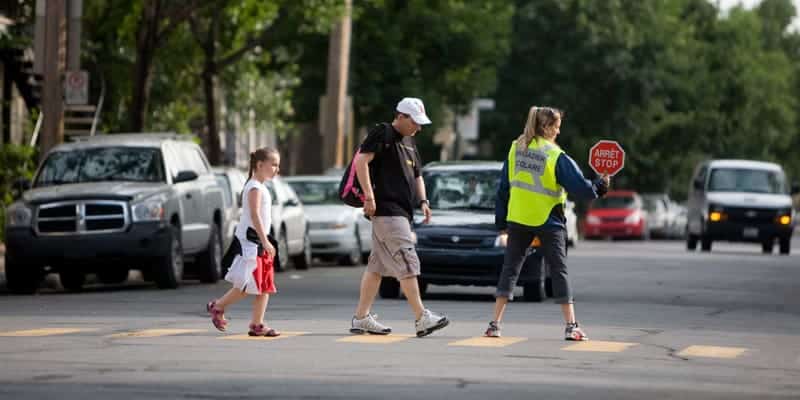What should be an acceptable number of deaths and serious injuries on our roads? That’s what Montreal residents were asked in 2017, as part of an awareness campaign. After an initial response (“ten”, “twenty”, “hundred and eighty”), respondents were then asked how many deaths and serious injuries would be acceptable in their own family. Inevitably, invariably, the answer was a resounding “zero”.
In 2022, 392 people died on our roads (45 more than in 2021), and 1,275 were seriously injured and will probably have to deal with the long-term after-effects of a road collision for the rest of their lives. While these figures represent a clear improvement over the 1970s (there were over 2,200 road deaths in 1973!), they also show that there is still a long way to go.
For cyclists, road safety has been constantly improving, despite the increase in the number of cyclists and vehicles on the road. How can this be explained? The network of cycle lanes, which guarantee greater safety for cyclists, has more than doubled in 20 years.
Road insecurity, both real and perceived, is also a huge deterrent to cycling uptake for the majority of the population: according to a 2012 university study, in North America more than half the population is “interested but concerned” about cycling. Improving road safety means giving more people more choice in their mode of travel.
For all these reasons, Vélo Québec welcomed the road safety plan presented just before the start of the school year by Minister Geneviève Guilbault, whose remarkable leadership on this issue is to be commended. It responds to many of the requests we made to her team.
In terms of governance, a working group will be (re)instated* to combine the efforts of all stakeholders: Société de l’assurance automobile du Québec (SAAQ), police forces, but also the Ministère des Transports et de la Mobilité durable (MTMD), municipalities and representatives of vulnerable road users. Indeed, road safety cannot be improved solely through awareness campaigns, however excellent they may be (note the SAAQ’s artificial empathy campaign and the City of Laval’s recent “Roule tout doux” campaign). Although the SAAQ already has a road safety plan, it was necessary to bring together all the actors that can also have an impact on the design of roads and streets, elements which play a decisive role in ensuring the safety of road users.
In terms of infrastructure, we are being told that it will be better financed and will better meet the needs of vulnerable road users: MTMD standards will finally be reviewed to take into account the reality of pedestrians, particularly school children and seniors, who are overrepresented in road casualties. With an additional $68 million injected into financial support programs for municipalities, they’ll be given the resources to do traffic-calming and provide sidewalks and bike lanes. Those new investments are welcome, as municipalities will now be mandated to limit speeds to 30 km/h in school zones, and to design these zones to ensure safe routes for school children.
If there’s a lingering concern, it’s about the provincial roads that fall under the MTMD’s jurisdiction, but run through the heart of Quebec’s towns and villages. Whoever followed the case of young Anaïs, who was fatally struck in her village of Saint-Flavien while walking along its main road – one that is lacking a sidewalk – will remember that the MTMD refused to pay for the construction of said sidewalk on its road. Following a referendum, the municipality refused to go into debt to build the needed sidewalk. While Ms. Guilbault’s new plan includes several actions on the theme of collaboration with municipalities, and mentions in passing the desire for “clear guidelines with regard to cost-sharing when carrying out joint projects”, we will be particularly attentive to cases involving the ministry’s infrastructure on municipal territory. If all the intentions expressed in this plan result in the MTMD and its regional branches becoming real partners in road safety, offering both their expertise and the funding needed for traffic-calming measures in communities (at the expense, if need be, of traffic fluidity), it would be nothing short of a revolution. It would be a major cultural shift, requiring strong leadership – another opportunity for Minister Guilbault to exercise it. And we would applaud this revolution with enthusiasm.
*The previous Table québécoise de la sécurité routière, created in 2005 and chaired by Jean-Marie de Koninck, has seen its work suspended since the 2017 public consultation on road safety.
Jean-François Rheault, CEO Vélo Québec


